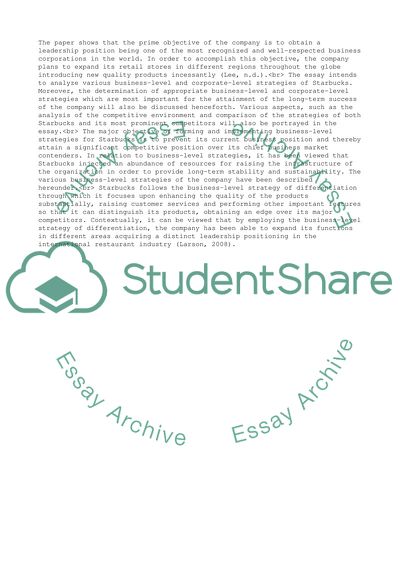Cite this document
(Starbucks and Strategic Analysis Case Study Example | Topics and Well Written Essays - 1500 words - 7, n.d.)
Starbucks and Strategic Analysis Case Study Example | Topics and Well Written Essays - 1500 words - 7. Retrieved from https://studentshare.org/management/1608325-business-level-and-corporate-level-strategies
Starbucks and Strategic Analysis Case Study Example | Topics and Well Written Essays - 1500 words - 7. Retrieved from https://studentshare.org/management/1608325-business-level-and-corporate-level-strategies
(Starbucks and Strategic Analysis Case Study Example | Topics and Well Written Essays - 1500 Words - 7)
Starbucks and Strategic Analysis Case Study Example | Topics and Well Written Essays - 1500 Words - 7. https://studentshare.org/management/1608325-business-level-and-corporate-level-strategies.
Starbucks and Strategic Analysis Case Study Example | Topics and Well Written Essays - 1500 Words - 7. https://studentshare.org/management/1608325-business-level-and-corporate-level-strategies.
“Starbucks and Strategic Analysis Case Study Example | Topics and Well Written Essays - 1500 Words - 7”, n.d. https://studentshare.org/management/1608325-business-level-and-corporate-level-strategies.


